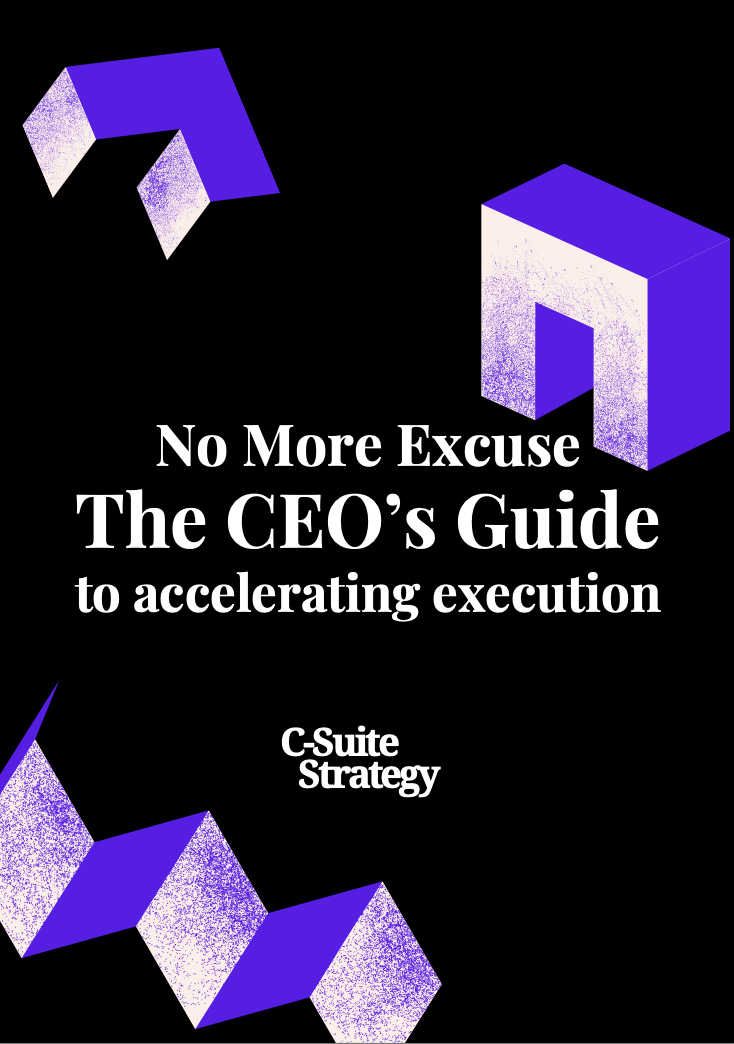The Role of a CEO in Shaping Company Vision
Championing a Vision that Defines Future Success
In today's dynamic and competitive landscape, the role of the CEO in shaping and championing the company vision is more crucial than ever. A well-defined strategic vision acts as a beacon, providing direction for the entire organization and aligning various stakeholders—from board directors to every executive officer—towards achieving common goals. CEOs must possess a comprehensive understanding of the market, as well as the technological and financial trends that influence their industries. This requires a blend of analytical prowess and intuitive leadership that guides the company through challenges and opportunities. The CEO acts as the chief architect of this vision, ensuring it resonates with the company's core ethos while being flexible enough to adapt to industry changes. To effectively navigate innovation and digital transformation, the CEO needs a direct line of communication with senior leaders, such as the vice president and systematic board, to foster a culture of inclusivity and open dialogue. Engaging with international and global teams further allows the company to leverage diverse perspectives, enriching the vision with varied insights. Moreover, fostering collaboration between the executive team and senior management helps inculcate a sense of shared responsibility in achieving strategic milestones. The CEO's leadership is pivotal in setting the tone for this collaboration, reinforcing the importance of transparency and trust in decision-making. Ultimately, the responsibility of shaping and maintaining a compelling vision doesn’t rest solely with the CEO. It extends across the hierarchies, where each level, from financial management professionals to the digital engineering team, plays a significant part. The strategic deployment of technology, such as artificial intelligence, will also empower businesses to stay ahead. The synthesis of these efforts leads to a vision that not only promises growth but also fosters a resilient organizational culture. For an in-depth exploration of effective business strategy and leadership, read more insights here.Navigating Innovation in a Competitive Landscape
Steering Innovation Amidst Fierce Competition
In today's ever-evolving business landscape, it's essential for CEOs and executive teams to continuously explore new avenues for innovation. Remaining competitive requires a deft touch in combining traditional business strategies with modern advancements in technology and management. Balancing the exploration of emerging trends such as artificial intelligence with tried-and-true business practices can lead to groundbreaking developments. While focusing on innovation, a CEO must also consider the financial and resource investments necessary to support this journey. Embracing digital transformation with a systematic approach is often key. This means integrating new software solutions and digital tools that align with the company’s overarching goals.- Technology Integration and Optimization: Leveraging cutting-edge technology can elevate a company beyond its competitors, providing a strategic advantage. Software companies, for instance, continually enhance their offerings to remain relevant and robust in the face of international competition.
- Financial and Resource Allocation: How investment decisions are made, particularly in financial management, is critical. CEOs must work with their board of directors to ensure that resources are allocated strategically, both short term and long term.
- Collaboration Amongst Leadership: The chief executive, or systematic CEO, often collaborates closely with the management team, including the senior executive and group senior officers, to ensure that innovation initiatives align with the company's mission. Regular communication—whether through meetings or email—ensures that all parties are aligned on key goals.
Building a Resilient Organizational Culture
Fostering a Culture That Endures
In today's rapidly evolving business environment, the role of the CEO extends beyond setting strategic direction to nurturing a resilient organizational culture. A well-established, resilient culture can serve as a company’s compass, guiding it through both turbulent and tranquil times. A culture that aligns with the company's vision acts as an invisible thread binding every innovation and decision, propelling the company forward amidst uncertainty.
The management and executive team, including the CEO, play a pivotal role in setting the tone for the company culture. By modeling behaviors that reflect the company's values and mission, the executive officers, from the chief executive to the group senior roles, demonstrate commitment. This is not just about day-to-day interactions, but a means to instill a long-term mindset and collective purpose within the company. Leaders should foster an inclusive environment where each employee feels empowered to contribute to the company's vision.
Investments in employee development are investments in culture. Providing access to resources and training in areas such as technology and financial management enables teams to leverage insights effectively, aligning with the company’s strategic goals. It's essential that the executive management remembers that cultural change is not an overnight shift, but a deliberate and systematic process that requires ongoing dedication.
Part of building this resilient culture involves incorporating diverse perspectives, ensuring that every member of the organization has a voice. As highlighted in insights from enhancing business strategy through CHRO insights, understanding these perspectives can unveil new pathways for growth and transformation. This cultural inclusivity is further supported by board directors and international officers, who often bring diverse experiences and insights from their global financial services background.
By advancing a culture that thrives on resilience, a CEO can ensure the organization is better equipped to navigate complexities, such as those presented by digital transformation and advancements in artificial intelligence. This culture becomes the sustainable core that enables a business to adapt seamlessly while holding true to its vision and strategic objectives.
Strategic Decision-Making in the C-suite
The Art of Critical Decision-Making
In the realm of the C-suite, strategic decision-making becomes an art form that can dictate the trajectory of your company. Every executive officer understands that pivotal decisions need to strike a balance between risk and opportunity. Effective management involves calibrating these decisions to align with both immediate business demands and overarching strategic vision. Navigating the intricate landscape of systematic choices requires the CEO to act with clarity and foresight. This involves collaborating with the board and executive team, incorporating insights from financial management and development strategies. By leveraging these insights, a CEO can transform seemingly isolated challenges into collaborative opportunities for growth.Bullets offer some clear focal points that CEOs usually consider:
- Risk Assessment & Mitigation: Before making a substantial investment, a thorough analysis needs to be conducted to gauge potential risks. This methodical approach serves as a backbone for the company’s financial stability.
- Global Perspective: A CEO must remain cognizant of international influences. Understanding global market trends and how they affect your business domestically can provide competitive advantages and ensure sustained growth.
- Integration of Technology: Employing advanced technologies, such as artificial intelligence and digital transformation tools, enhances company capability and refines decision-making processes.
- Continuous Innovation: It’s crucial for CEOs to encourage a culture of innovation, promoting a dynamic environment where transformation is a norm rather than an exception.
Balancing Short-term Wins with Long-term Goals
Integrating Short-term Victories into Long-term Strategy
In the pursuit of business objectives, balancing immediate achievements with overarching goals is an art every CEO must master. This involves a strategic orchestration of resources, financial management, and technology adoption, all while aligning with the vision crafted by the executive team. The pathway to integrating short-term wins within a long-term framework begins at the top. As the chief executive, the CEO must ensure every short-term gain aligns with the broader strategy. This requires actively engaging with the board and management to synchronize efforts across departments.- Operational Alignment: Each department—whether it's technology development, financial services, or international strategy—must operate in harmony. Setting clear, systematic goals for each arm of the company not only secures immediate victories but strengthens the foundation for future endeavors.
- Investments and Trade-offs: Strategic investments are pivotal. Whether investing in artificial intelligence or digital transformation, each decision should support both current demands and future aspirations. The executive officer must evaluate these trade-offs carefully, ensuring that financial resources are optimized.
- Data-Driven Decisions: Leveraging software, particularly in a globally expanding landscape, facilitates data-driven decision-making. CEOs rely on advanced analytics to measure short-term performance, informing long-term strategy adjustments.
- Communication and Culture: Effective communication fosters a resilient organizational culture, as discussed earlier. Using tools like email and press releases, CEOs should continuously convey the importance of short-term accomplishments within the broader strategic context, ensuring that every member of the organization remains aligned.









-large-teaser.webp)


-large-teaser.webp)

